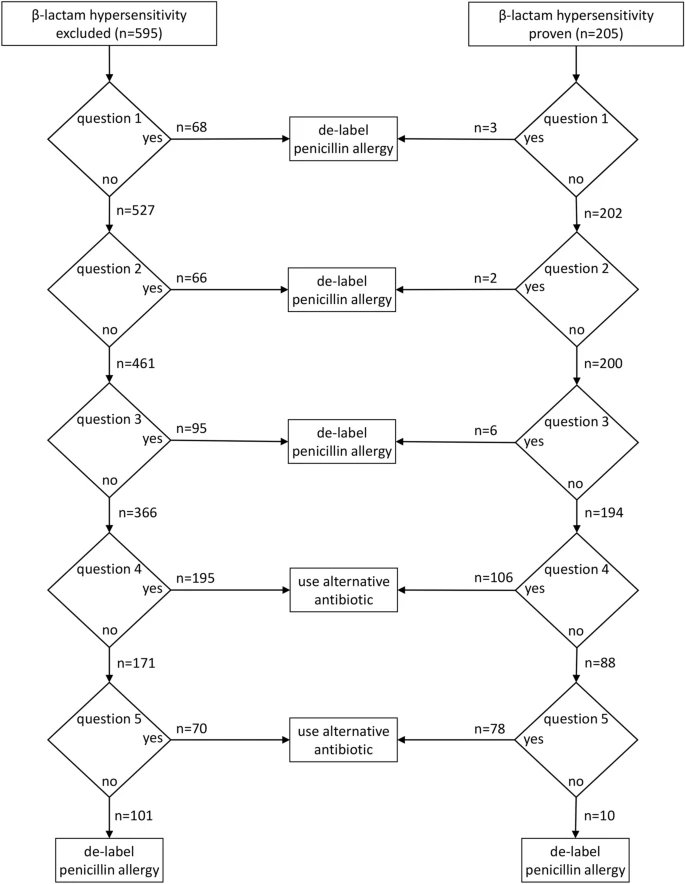- Research
- Open Access
Allergy, Asthma & Clinical Immunology 18, Article number: 26 (2022)
Abstract
Background
Penicillin allergy labels frequently impede guideline-directed treatment with a penicillin or other β-lactam antibiotics. Despite presumed allergy, targeted questioning may indicate a low probability of sensitization and permit reasonably safe administration of the antibiotic in question. In this study, we evaluated a standardized algorithm aiming to differentiate non-allergic patients from those with true allergic β-lactam hypersensitivity.
Methods
We retrospectively applied a de-labelling algorithm in 800 consecutive patients with suspected β-lactam hypersensitivity. All had undergone complete allergy work-up permitting to definitely exclude or diagnose β-lactam allergy between 2009 and 2019.
Results
In 595 (74.4%) out of 800 cases evaluated, β-lactam allergy could be excluded by negative challenge testing. IgE-mediated anaphylaxis was diagnosed in 70 (8.7%) patients, delayed-type hypersensitivity in 135 (16.9%). In 62 (88.6%) anaphylaxis cases, the algorithm correctly advised to use an alternative antibiotic. Accuracy was higher in patients with moderate to severe anaphylaxis (97.7%) compared to those with a history of mild reactions (73.1%). The algorithm correctly identified 122 (90.4%) patients with proven delayed-type hypersensitivity. It permitted de-labelling in 330 (55.5%) out of 595 patients with diagnostic exclusion of penicillin hypersensitivity, but failed to identify the remaining 265 (44.5%) as low-risk cases.
Conclusions
The algorithm detected 89.8% of cases with penicillin (β-lactam) allergy, sensitivity was optimal for moderate to severe anaphylaxis. Study data justify the implementation of a standardized de-labelling algorithm under close supervision in order to permit guideline-directed treatment and reduce the use of broad-spectrum antibiotics as part of an antibiotic stewardship program.

No comments:
Post a Comment